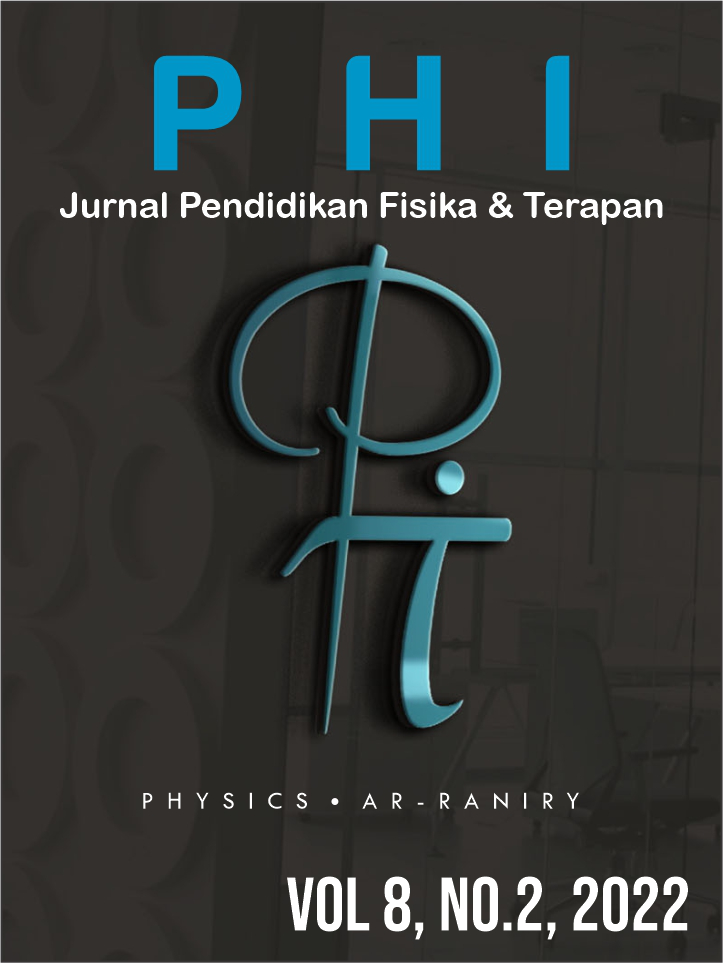Physical Properties of Orange Peels Eco-enzyme: One way to Reduce and Recycle Waste and Environmental Problem
DOI:
https://doi.org/10.22373/p-jpft.v8i2.15355Keywords:
eco-enzyme, orange peels, pH, electrical conductivity, total dissolved solidAbstract
A high quantity of organic waste without proper waste management can endanger public health and environmental sustainability. To reduce the risk that can be caused by organic waste pollution, then there should be a solution. One of them is to make eco-enzyme. Eco-enzyme is a fermented solution from organic waste that can be used as floor cleaner, plant disinfectant, hand sanitiser, plant fertilizer, etc. A good eco-enzyme solution has special properties. One of them is the low-value power of Hydrogen (pH). In this study, other physical properties of eco-enzyme are analyzed. Eco-enzyme was produced from organic waste. Here, Sunkist orange peel and various mixtures of orange peel were used as the main materials of eco-enzyme. The eco-enzyme solutions were carried out for 33 days, accompanied by routine monitoring by reviewing physical parameters such as pH, Total Dissolved Solid (TDS), and Electrical Conductivity (EC) values. The results showed the characteristics of the eco-enzyme product by physical properties are the eco-enzyme has an acidic with a low pH value (<3.6) accompanied by high values of TDS (>1000 ppm) and EC (>1500mS/cm). The finding is TDS and EC have high value whereas usually high EC and TDS are owned by polluted liquids.References
Alkadri S.P., Asmara K.D. Pelatihan Pembuatan Eco-Enzyme Sebagai Hand sanitizer dan Desinfektan Pada Masyarakat Dusun Margo Sari Desa Rasau Jaya Tiga Dalam Upaya Mewujudkan Desa Mandiri Tangguh Covid-19 Berbasis Eco-Community. Buletin Al-Ribaath. 2020; 17(2): 98-103.
Destriyani L. Effect of Saving Age From Sugarcane's Water Storage Life to Sweetenestlevel of Sugarcane'Water. Jurnal Teknik Pertanian Lampung. 2014;3(2):142387.
Eco-enzyme Nusantara. Modul Belajar Pembuatan Ecoenzym. Nusantara Bersama Kita. 2020.
Etienne, A., Genard, M., Lobit, P., Mbeguie-A-Mbeguie, dan Bugaud, C. 2013. What controls fleshy fruit acidity? A review of malate and citrate accumulation in fruit cells. Journal of Experimental Botany, Vol. 64, No. 6, pp. 1451–1469, 2013.
Etienne A., Génard M., Lobit P., Mbeguié-A-Mbéguié D., Bugaud C.. What controls fleshy fruit acidity? A review of malate and citrate accumulation in fruit cells. Journal of experimental botany. 2013; 64(6): 1451-69.
Hemalatha, M., dan Visantini, P. 2016. Potential Use of Eco-Enzyme for The Treatment of Metal Based Effluent. The Third Bioprocessing and Biomanufacturing Symposium 2019. doi:10.1088/1757-899X/716/1/012016
Hemalatha M, Visantini P. Potential use of eco-enzyme for the treatment of metal based effluent. IOP Conference Series: Materials Science and Engineering. 2020; Vol. 716(1); p. 012016.
Irwan F., Afdal A. Analisis hubungan konduktivitas listrik dengan Total Dissolved Solid (TDS) dan temperatur pada beberapa jenis air. Jurnal Fisika Unand. 2016; 5(1): 85-93.
Kerkar S.S., Salvi S.S. Application of eco-enzyme for domestic waste water treatment. International Journal for Research in Engineering Application and Management. 2020; 5(11): 114-6.
Larasati D., Astuti A.P., Maharani E.T. Uji organoleptik produk eco-enzyme dari limbah kulit buah (studi kasus di Kota Semarang). EDUSAINTEK. 2020; 4.
Luthfiyyah, A.P.Y.S., Farabi, A. Konsep Eco-Community Melalui Pengembangan Eco-Enzyme Sebagai Usaha Pengolahan Sampah Organik Secara Tuntas Pada Level Rumah Tangga. 2010 Kemampuan Koneksi Matematis (Tinjauan Terhadap Pendekatan Pembelajaran Savi); 53(9); 1689–1699.
Mavani H.A., Tew I.M., Wong L., Yew H.Z., Mahyuddin A., Ahmad G.R., Pow E.H. Antimicrobial efficacy of fruit peels eco-enzyme against Enterococcus faecalis: an in vitro study. International Journal of Environmental Research and Public Health. 2020; 17(14): 5107.
Rochyani, N., Utpalasari R.L., Dahliana I. Analisis hasil konversi eco enzyme menggunakan nenas (Ananas comosus) dan pepaya (Carica papaya L.). Jurnal Redoks. 2020; 5(2): 135-40.
Selvakumar P, Sivashanmugam P. Optimization of lipase production from organic solid waste by anaerobic digestion and its application in biodiesel production. Fuel Processing Technology. 2017; 165: 1-8.
Downloads
Published
Issue
Section
License
Authors who publish with Jurnal Phi agree to the following terms:
- Authors retain copyright and grant the journal right of first publication with the work simultaneously licensed under a Creative Commons Attribution License (CC BY 4.0) that allows others to share the work with an acknowledgment of the work's authorship and initial publication in this journal.
- Authors are able to enter into separate, additional contractual arrangements for the non-exclusive distribution of the journal's published version of the work (e.g., post it to an institutional repository or publish it in a book), with an acknowledgment of its initial publication in this journal.
- Authors are permitted and encouraged to post their work online (e.g., in institutional repositories or on their website) prior to and during the submission process, as it can lead to productive exchanges, as well as earlier and greater citation of published work (See The Effect of Open Access).

















